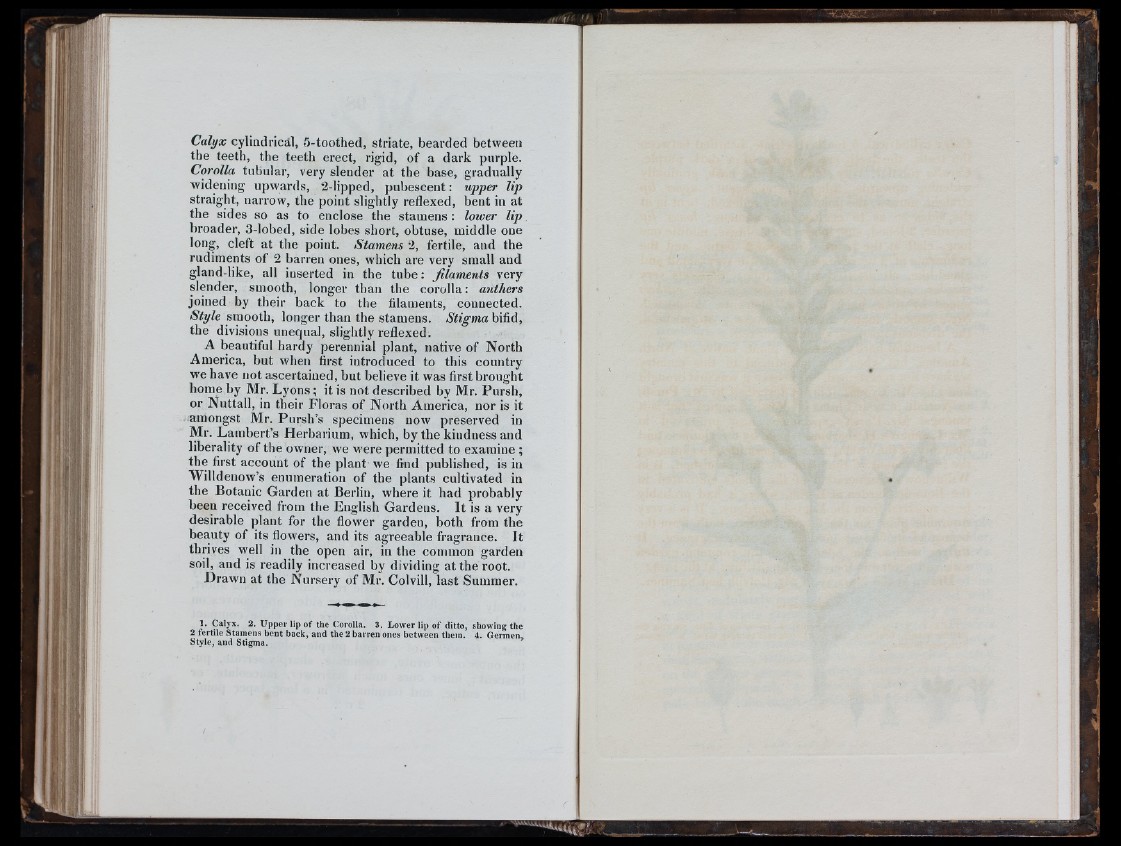
Calyx cylindrical, 5-toothed, striate, bearded between
the teeth, the teeth erect, rigid, of a dark purple.
Corolla tubular, very slender at the base, gradually
widening upwards, 2-Iipped, pubescent: upper lip
straight, narrow, the point slightly reflexed, bent in at
the sides so as to enclose the stamens: lower lip
broader, 3-lobed, side lobes short, obtuse, middle one
long, cleft at the point. Stamens 2, fertile, and the
rudiments of 2 barren ones, which are very small and
gland-like, all inserted in the tu b e : filaments very
slender, smooth, longer than the corolla: anthers
joined by their back to the filaments, connected.
Style smooth, longer than the stamens. Stigma bifid,
the divisions unequal, slightly reflexed.
A beautiful hardy perennial plant, native of North
America, but when first introduced to this country
we have not ascertained, but believe it was first brought
home by Mr. Lyons; it is not described by Mr. Pursh,
or Nnttall, in their Floras of North America, nor is it
amongst Mr. Pursh’s specimens now preserved in
Mr. Lambert’s Herbarium, which, by the kindness and
liberality of the owner, we were permitted to examine ;
the first account of the plant we find published, is in
Willdenovv’s enumeration of the plants cultivated in
the Botanic Garden at Berlin, where it had probably
been received from the English Gardens. It is a very
desirable plant for the flower garden, both from the
beauty of its flowers, and its agreeable fragrance. It
thrives well in the open air, in the common garden
soil, and is readily increased by dividing at the root.
Drawn at the Nursery of Mr. Colvill, last Summer.
1. Calyx. 2. Upper lip of the Corolla. 3. Lower lip of ditto, showing the
2 fertile Stamens bent back, and the 2 barren ones between them. 4. Germen,
Style, and Stigma.